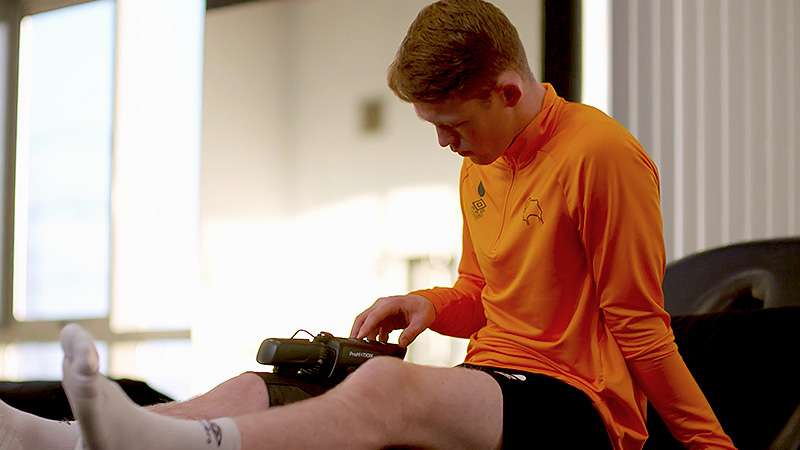A recent study published in the British Journal of Sports Medicine, has highlighted the increasing rate of hamstring injuries in men’s professional football.
The study, published by Ekstrand et al. (2022) noted hamstring injury rates doubling over a 10 year period, reaching 24% by the 2021/22 season. The impact of this increase in injuries has in turn impacted on the time players have spent ruled out or playing and training.
Time out through injury is increasing
The average time out due to hamstring injury is 13 days and it was reported that 20% of players missed training or match play due to hamstring injury during a season in the 2021/22 season.
Figures like these can have a significant impact, especially for teams with small squads, as John Hartley, Head Physio at English Football League Club Derby County, explains:
“When you have a huge squad, sometimes you can rotate the players and make it a little bit easier to spread the overall load on the players.
“When you have a smaller squad, you find that quite often those key players or a lot of the squad are playing most of the games. So they’re the guys that are probably more at risk, at times, of exposure to getting injured.
“We’ve got a really good, tight knit squad here that work really well together and support each other in great ways. So losing any player, any time for us is obviously quite a big thing. Particularly if you lose two or three and can have quite a big impact on the squad.”
What do the stats tell us?
- Biceps femoris injury was the most common type hamstring injury
- Running and sprinting was the most common mechanism of injury (61%)
- Players are 10 times more likely to occur during a match than training.
- Hamstring injuries are most likely to occur in the last 15 minutes of each half in a match
- There is an increased chance of recurrence in the same location within two months of injury
Why are hamstring injuries on the rise?
According to Ekstrand et al. (2022) the increase in hamstring injuries risk could be due to the increase in intensity in men’s football. The speed of the game could also be the culprit. Today’s game, and the players, are faster than their predecessors of decades gone by, putting increased strain and raising the risk of injury.
The crowded player calendar congested fixtures period will also no doubt be compounding the pressure on hamstrings. Professional players now work year-round apart from a 4–6 week break between seasons, and much of this is taken up with pre-season activity and international travel.
Where to learn more?
The full article can be found at https://bjsm.bmj.com/content/57/5/292
Read more about hamstring injuries and how ProMOTION EV1 can help.




























